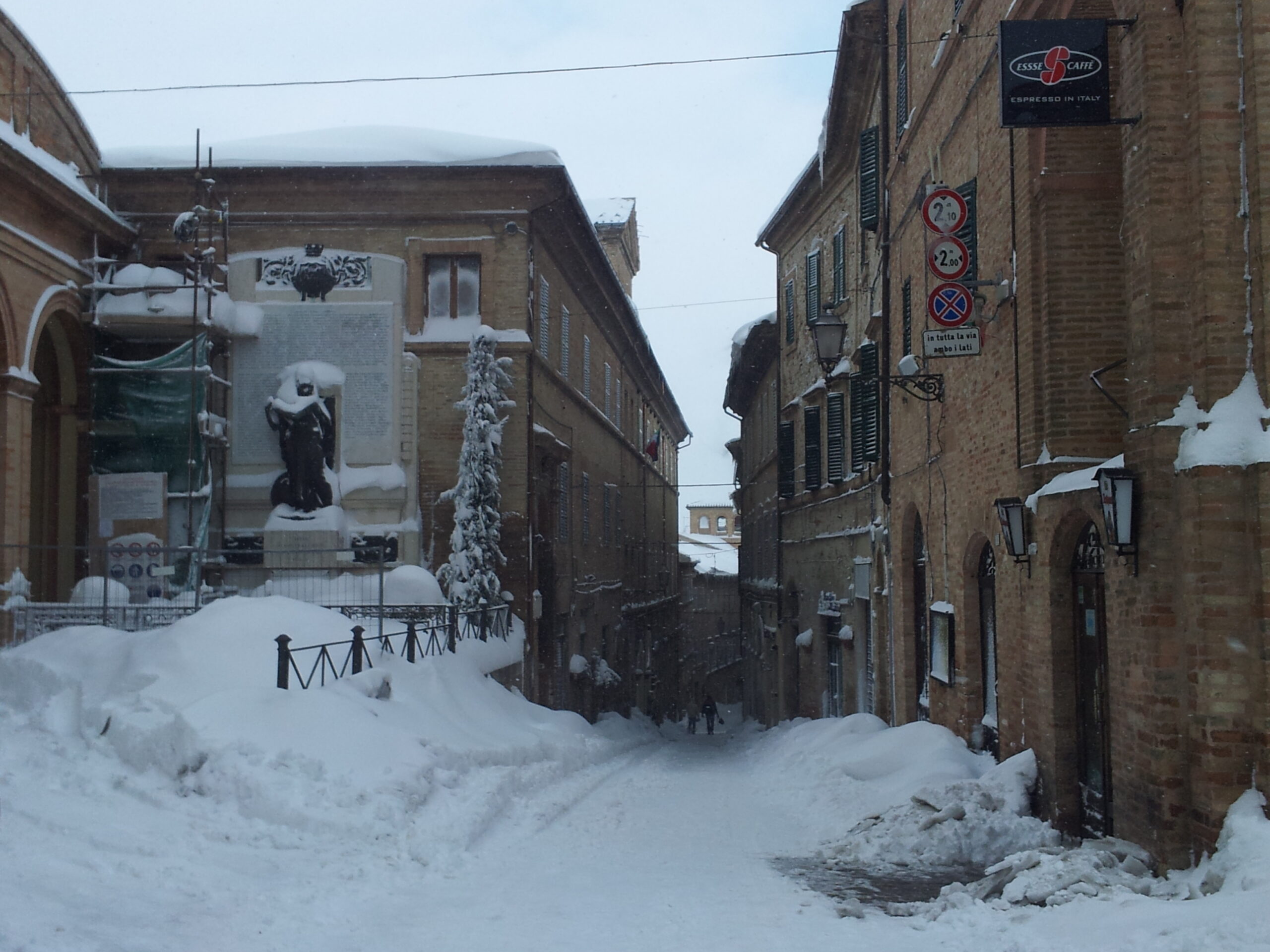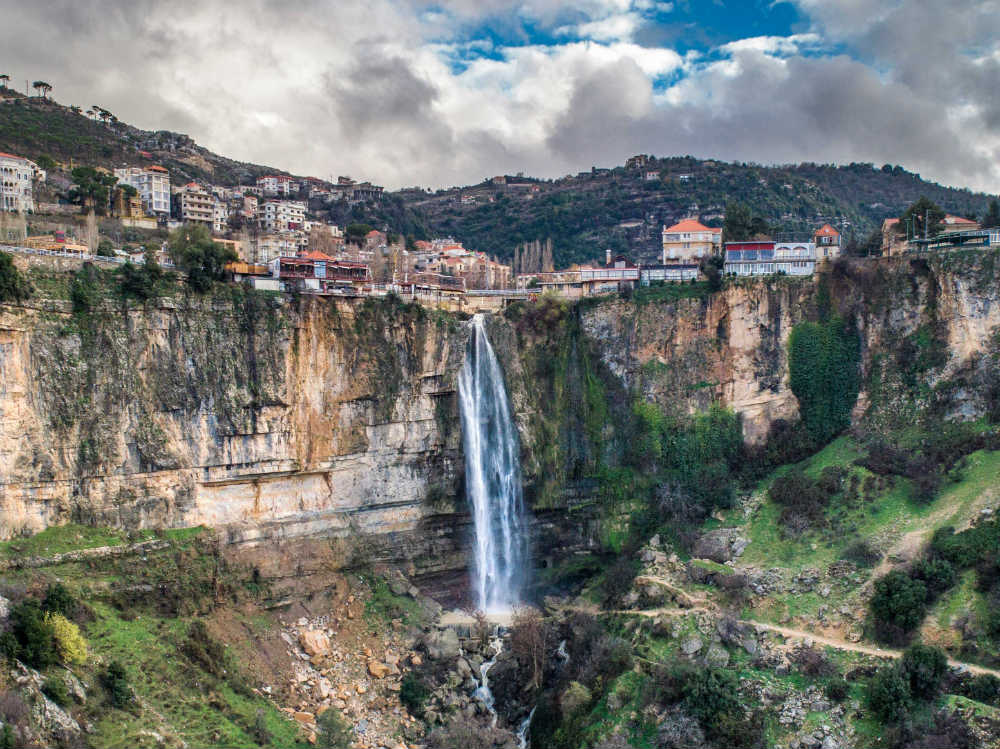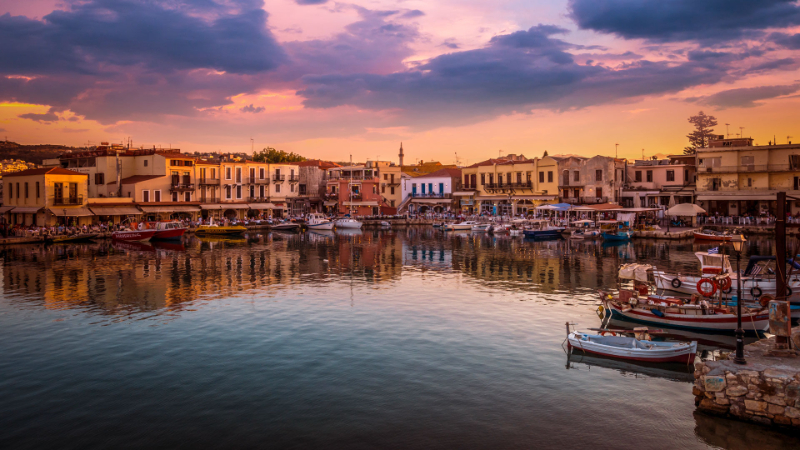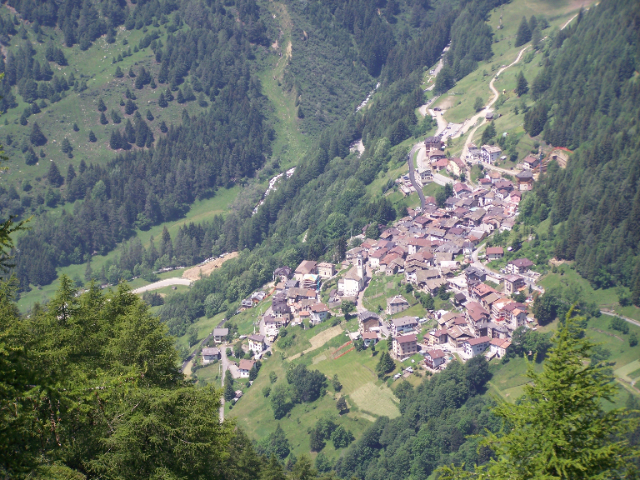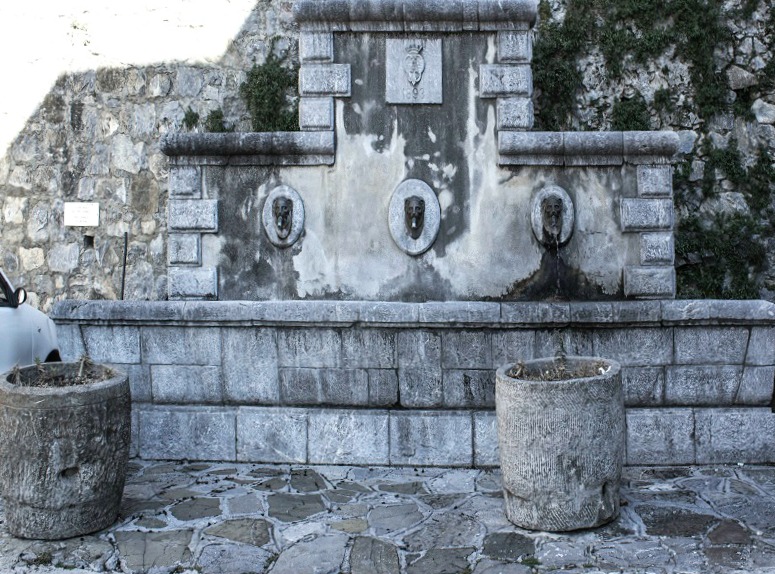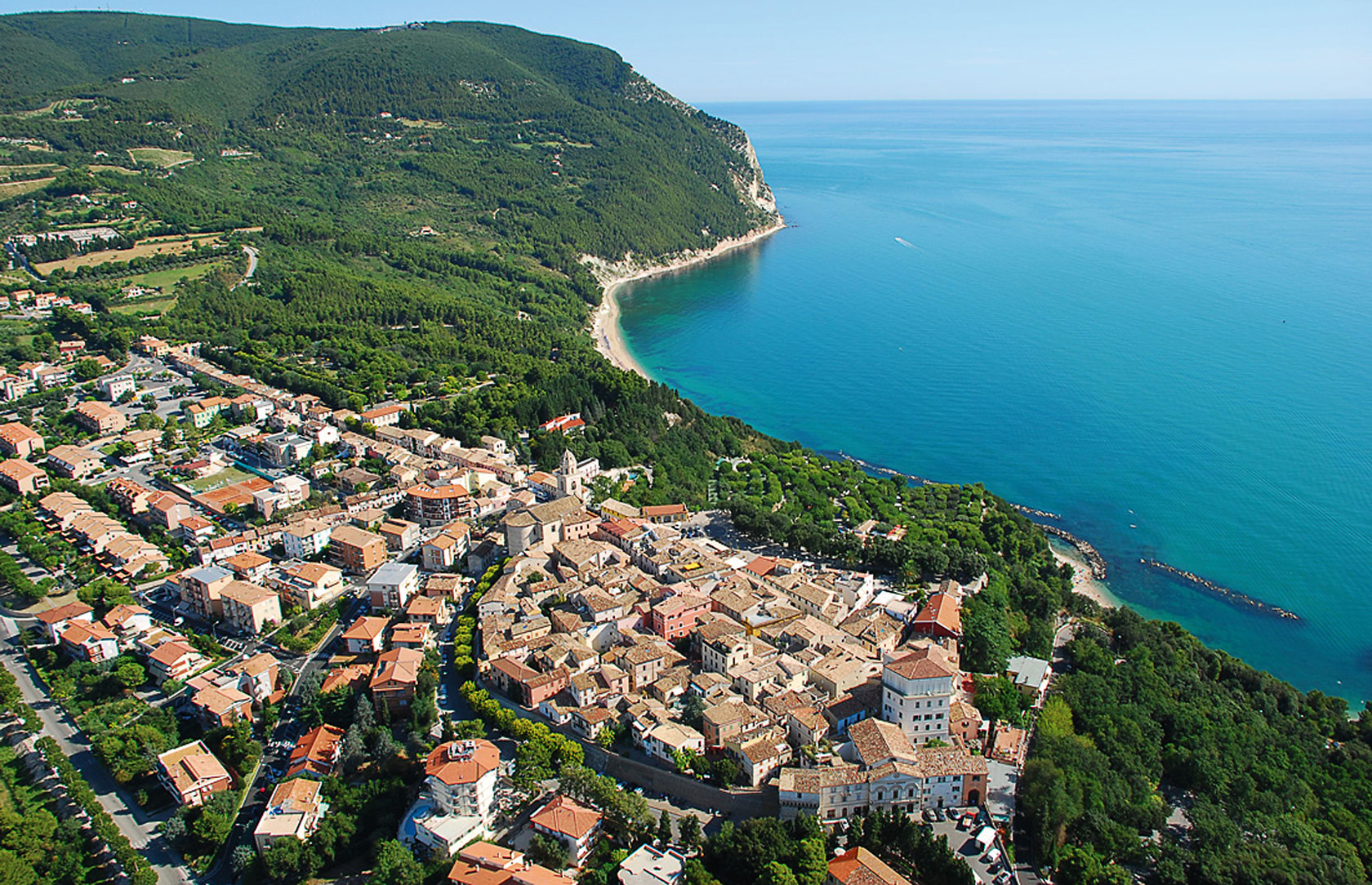The ancient Treia rose on the area of the actual complex of the Sanctuary of the SS. Crucifix, along a branch of the Via Flaminia that from Septempeda (San Severino) led to Ancon (Ancona), passing for Auxium (Osimo). Founded by the Sabines in 380 B.C., it derives its name from that of the goddess Trea-Jana, a divinity of Greek-Sicilian origin who was worshipped here; first a Roman colony, then a municipality (109 B.C.), it reached a considerable urban extension and military importance. The position on an ancient road favored, in the high Middle Ages, the decline of the Empire, passages and raids of various barbarian armies that crossed the peninsula in the direction of Rome. The inhabitants, to escape from the continuous looting and also because of the changed political-social-environmental conditions, abandoned the city of plain and took refuge on the three small hills nearby that allowed an easier defense. The new city thus took the name of Montecchio (Monticulum or Monteclum: small mountain), which changed only in 1790, when Pius VI raised it to the rank of "city", reassuming the ancient name of Treia. Even though it was subject, like almost all the other cities of the Marca, to the State of the Church, around the XI-XII centuries, the city gave itself its own communal order (in 1157 there is mention of two Consuls) and acquired a precise physiognomy: the consequence was the construction of an imposing defensive system including the three castles of Onglavina, Elce and Cassero, the mighty walls and the various access gates. Two warlike episodes of particular importance have marked the history of Montecchio: in the sphere of the contrasts between the Papacy and the Empire, the city was besieged once in 1239, by the army of King Enzo, natural son of Frederick II, and in 1263, by that of Conrad of Antioch, nephew of Frederick II. The two events resulted positively for Montecchiesi, indeed in the second circumstance managed to make prisoner the same Conrad, but returned to freedom, after two months of imprisonment in the castle of Cassero, because of the alleged betrayal of the mayor Baglioni, let corrupt the enemy. Treia, or better Montecchio, remained subjected, directly or indirectly and even with different parentheses determined by the succession of various political events, to the State of the Church until 1860, when, after the battle of Castelfidardo, the city was annexed to the Kingdom of Italy.
In the historical center we find the Church of S. Francesco and the Church of San Michele in Romanesque style mixed with Gothic. In the gothic church of Santa Chiara inside there is a statue of the Madonna di Loreto made of cedar wood from Lebanon. To see also Villa Spada (La Quiete) realized by the architect Giuseppe Valadier, the Santuario Santissimo Crocefisso realized by Cesare Bazzani at the beginning of the 20th century with inside a fresco of the Umbrian school of the 16th century representing S. Sebastiano and above the high altar a 16th century crucifix of local art. Not to lose is the Tower Onglavina that flanks the curtain wall and opens to marvelous panoramas. Inside the Civic Archaeological Museum located in the Convent of San Francesco are preserved numerous sculptural fragments, architectural elements and inscriptions that testify to the different phases of evolution of the Roman Treia and the close ties with the East, in particular with Egypt.
An important event, one of the most relevant on a national level is the disfida del bracciale which takes place in the city of Treia.
The Disfida del Bracciale (Bracelet Challenge) is a historical commemoration held every year during the first Sunday of August since the nineteenth century and it still remembers the golden season of the bracelet with the Treia nobleman and great player: Carlo Didimi. Remembering and celebrating him, today the city recreates the atmosphere of those times reconstructing the era and the neighborhoods are, as always, divided by color, Onglavina (yellow) Cassero (green) Vallesacco (purple) and Borgo (blue). Every evening the historical center is animated to party from numerous shows of music, animation and you rediscover even the recipes of the time tasted in the taverns of the quarters. Sunday is the day dedicated to the game and the winner will keep the trophy until the next edition. The origin of this game (ball) comes from very far away, since the ancient Greece has then become a classic game and the scene of famous challenges in these spheristers. The bracelet is an integral part of the history of the city of Treia. In a few words the game consists in the following way: the teams are composed by a batter, a fullback and a back a reserve and a mandarin (a character external to the game), but who has the very important task to send the ball to the batter before he takes the run-up from the springboard for the hit. The game partly resembles tennis and the point count is in 15. Each game is divided into fractions called trampolines that usually make up four games. Treia is a town definitely worth stopping to visit, immersed in tradition, memory and the beauty of history.
